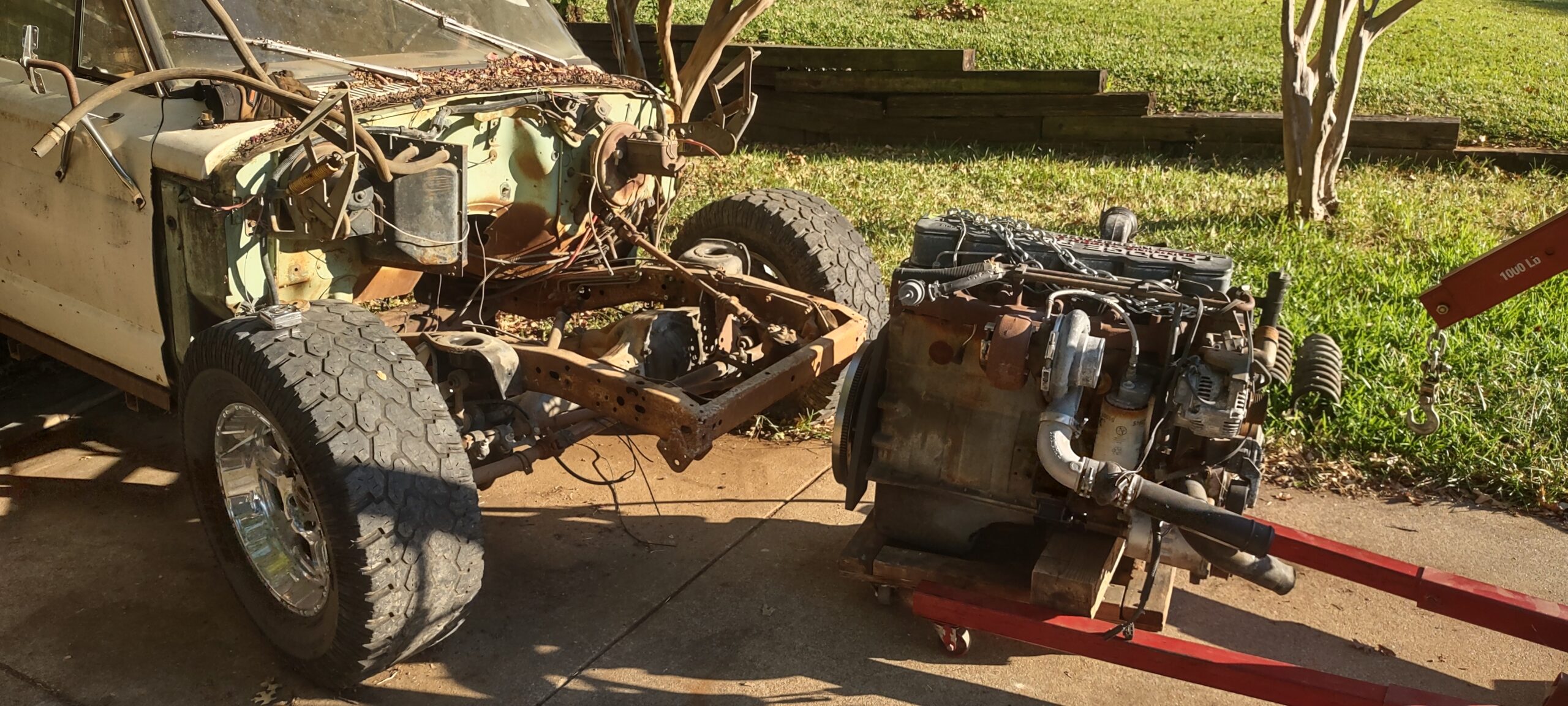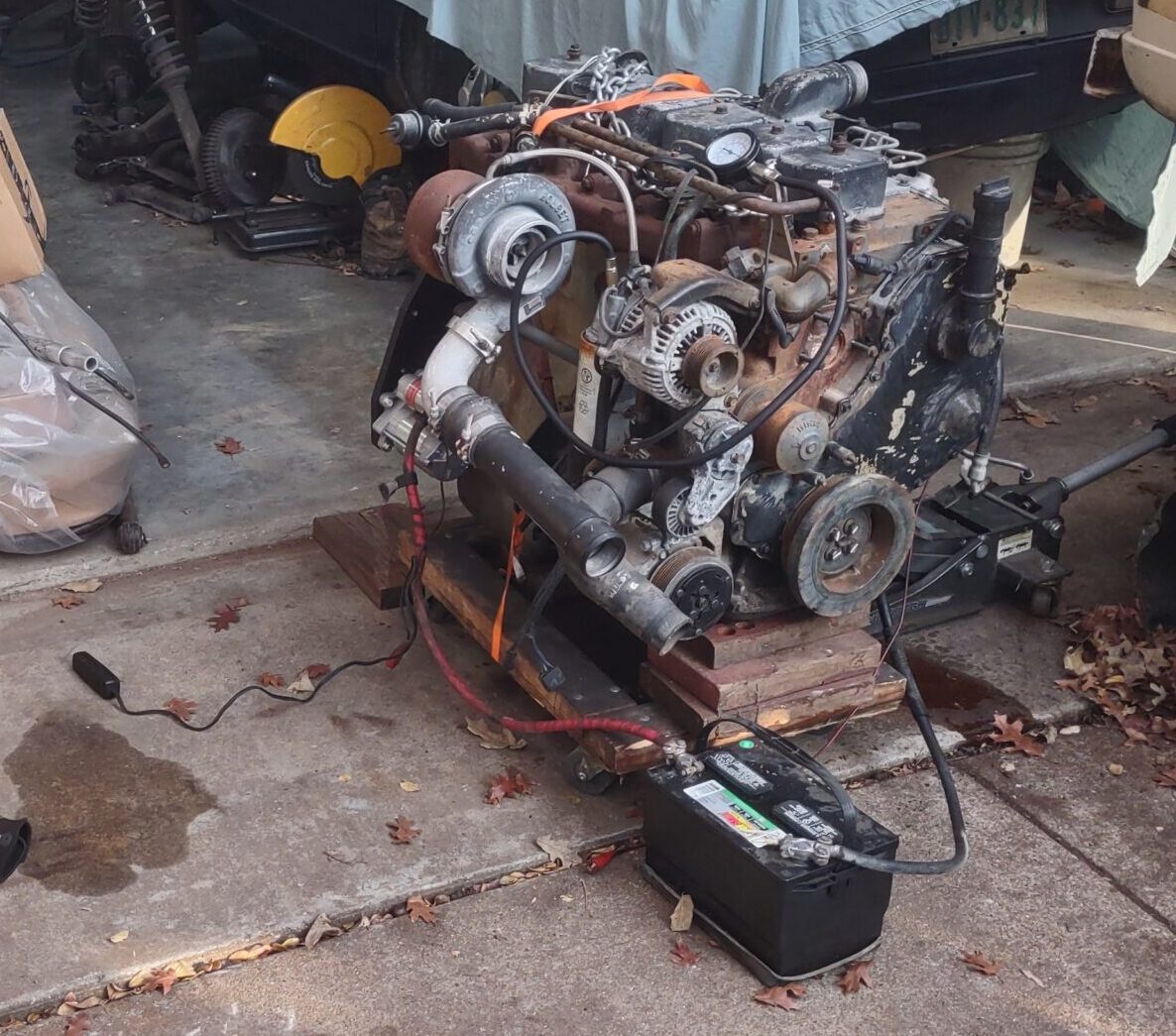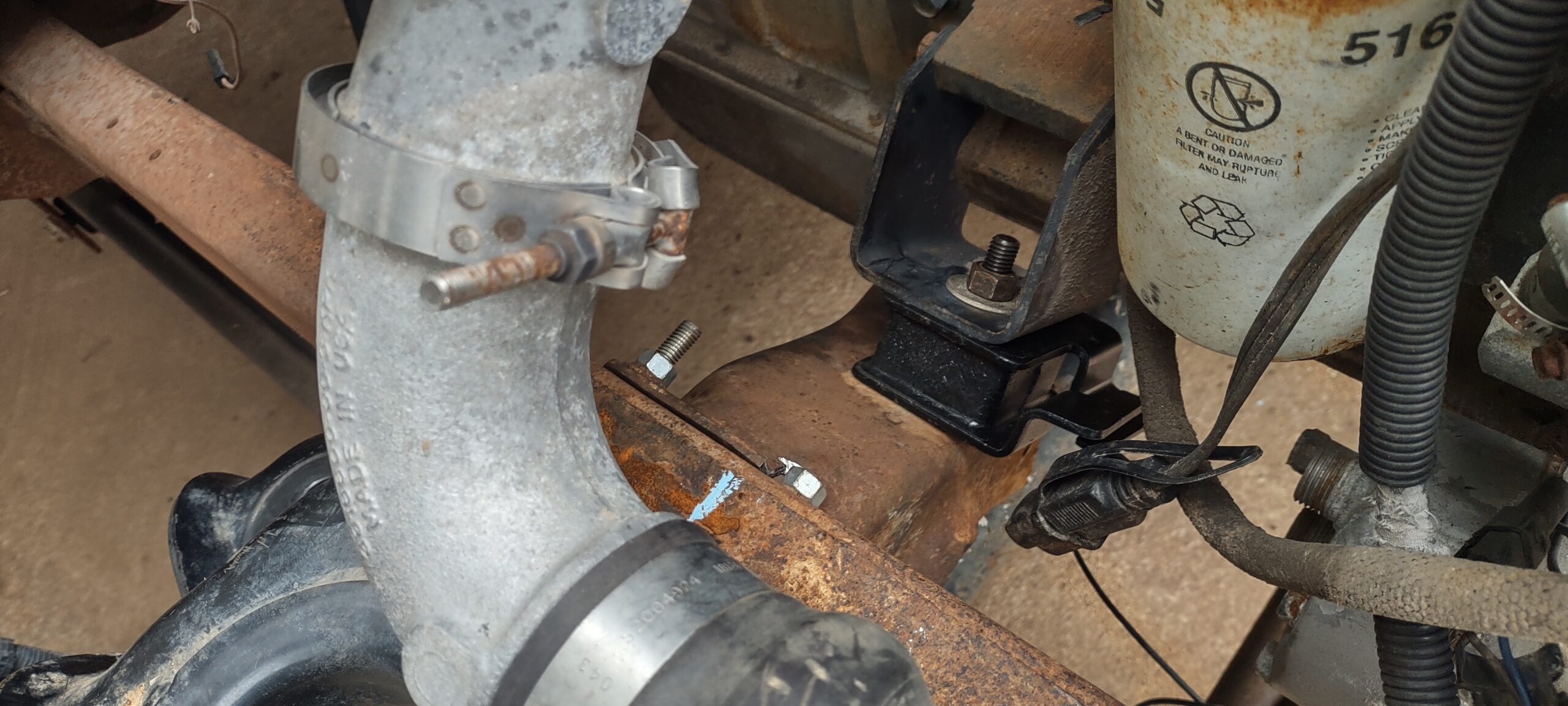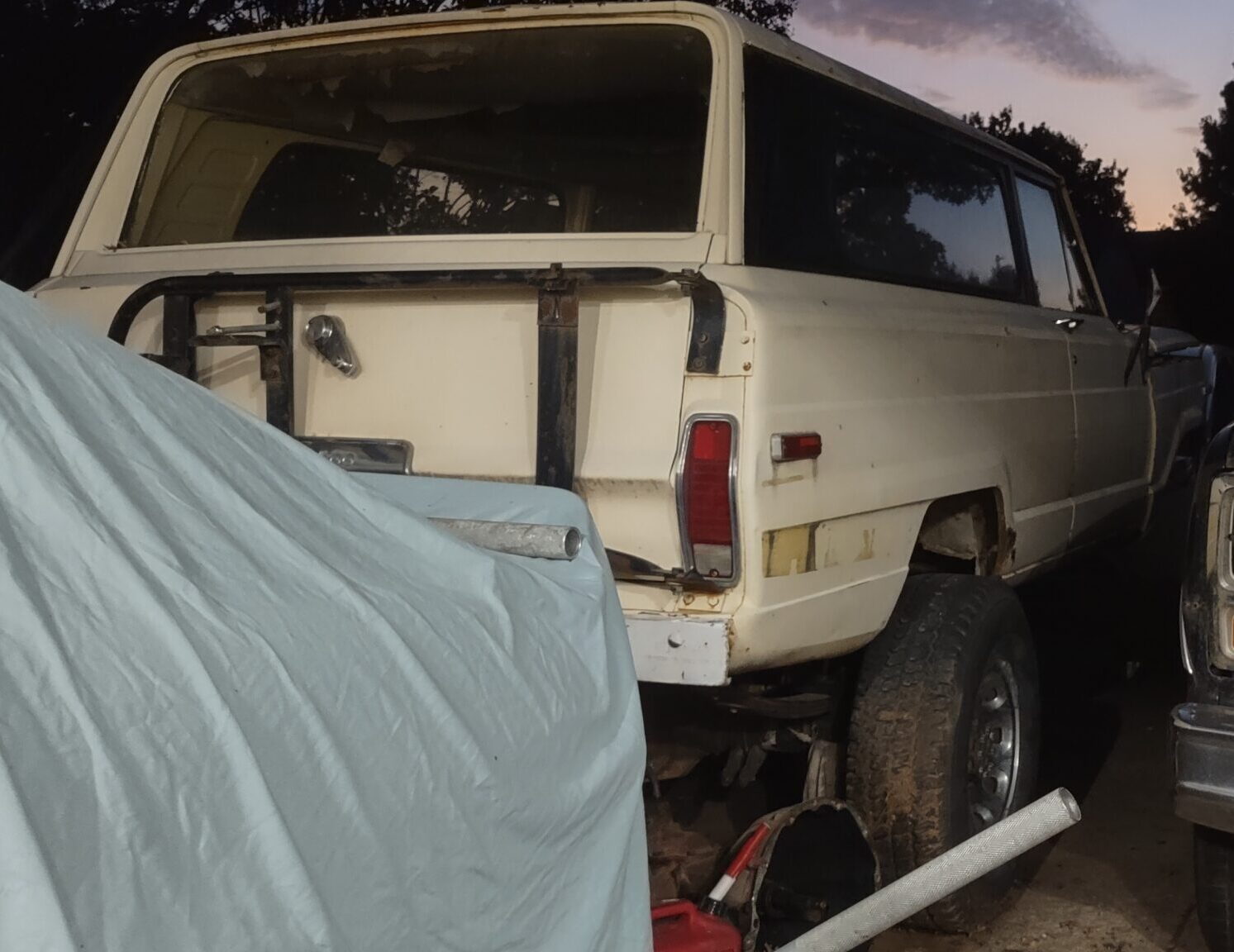After many wasted lazy days and much guilt from fellow car piers I finally made it outside to chip away at the major hurdle of putting the engine into the Jeep. The setup was most of the work. I had put the Jeep on dollies in the front but was reminded how they are difficult to roll with a lot of weight on them. The idea of rotating the front of the Jeep around to face the garage is dead in the water. Additionally, in my summer hiatus I conveniently forgot how high the truck sits. The front of the frame is 38 inches high and a 6BT from bottom of the oil pan to valve covers is roughly 32 inches, meaning the engine hoist would need to raise at least 70 inches while not extending the arm all the way out (which is rated for 1000lbs). This idea of rolling the truck under a suspended engine was clearly not going to work. I decided to lift the frame, remove the coil springs and lower the frame down onto the axles. This really cranks the front of the Jeep nose down so that will need to be accounted for when placing engine in. As part of this process, I don’t know yet, but have a suspicion the track part is going to interfere. I was going change this for an adjustable unit and might go with something other than a straight bar… documented on another post, another day.
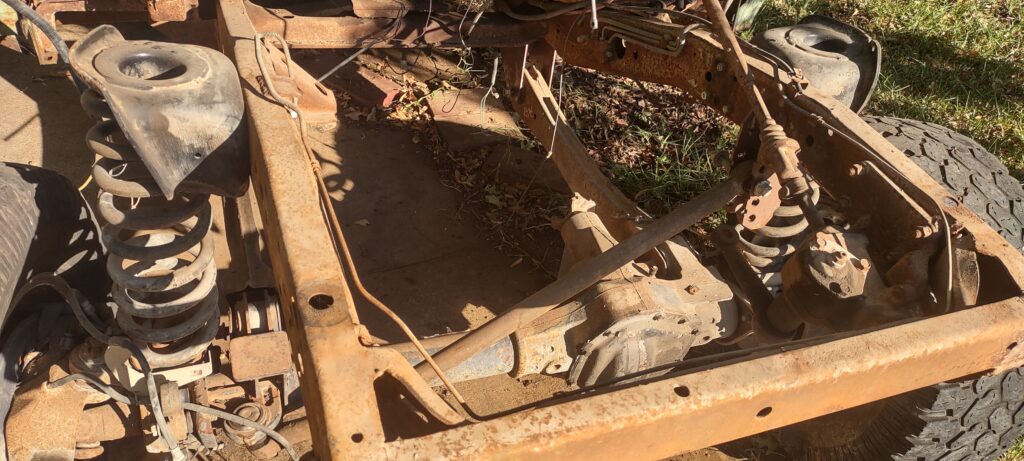
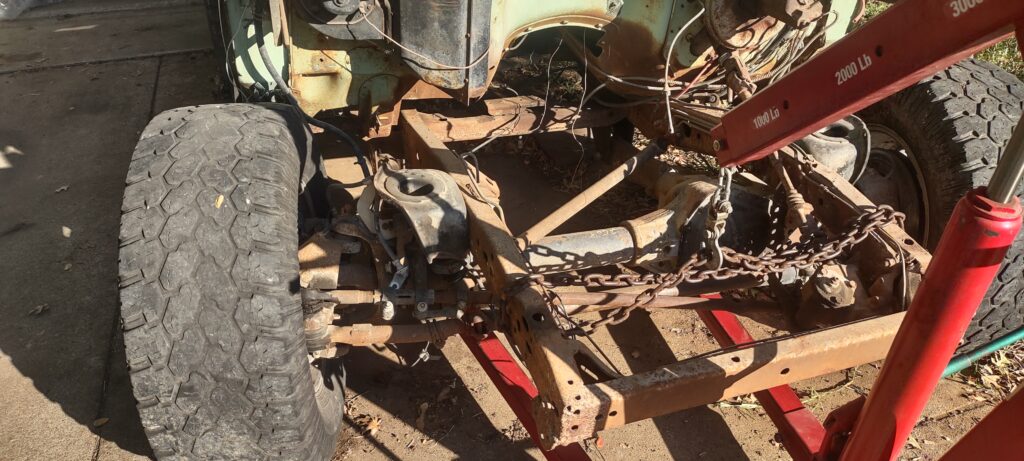

I found that the setup and playing Tetris with “garage stuff” took the longest time. The engine is on a dolly which does actually roll, until it hits a lip in the pavement and then you have to get creative. Once the front clip was off, truck lowered, motor out, hoist assembled, I was very surprised how quickly the engine went in.
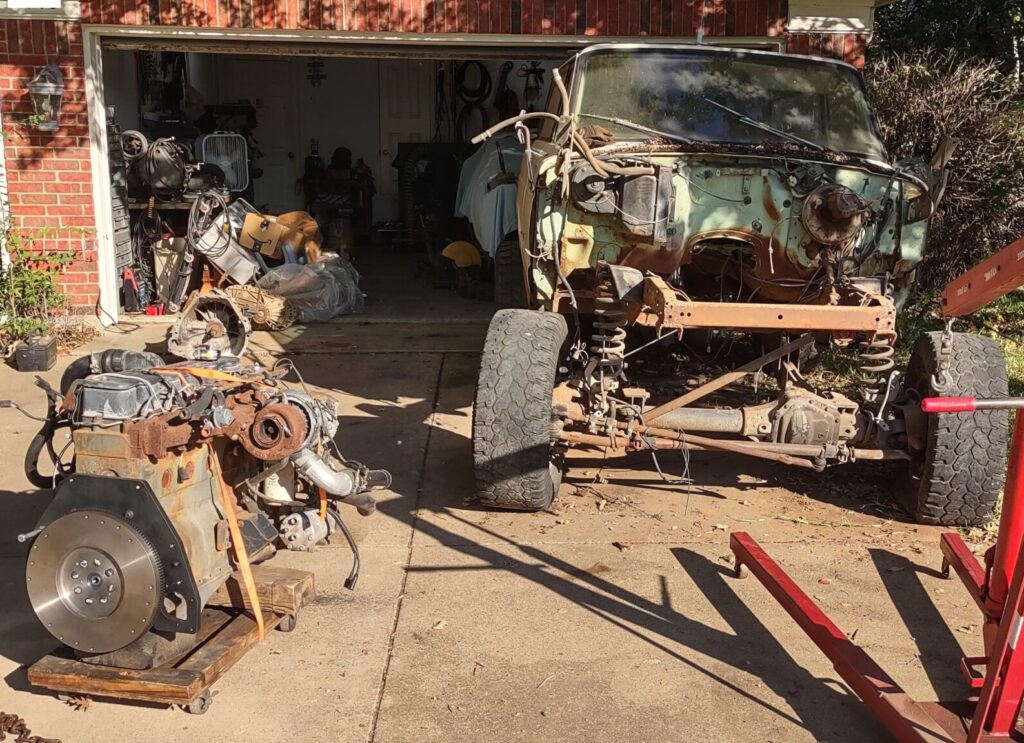
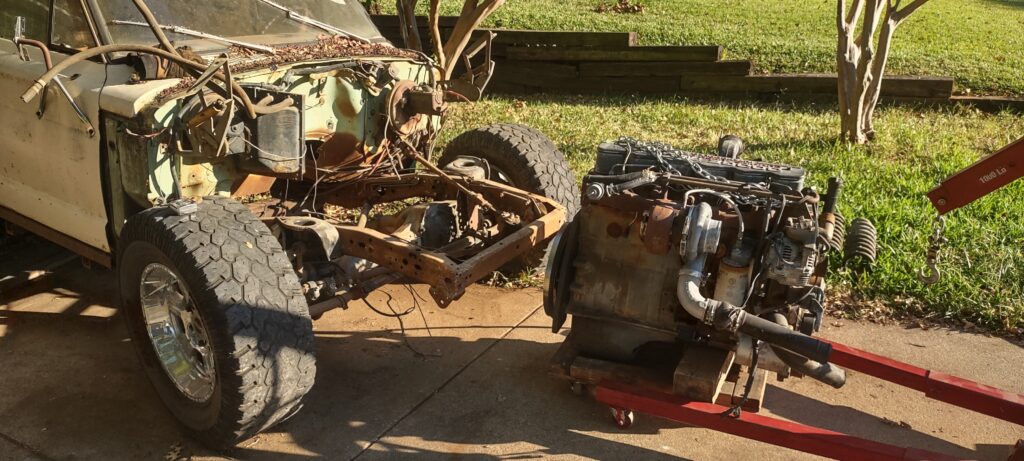
This entire process is to see where the engine will fit, what will interfere with motor or mounts, and ultimately to determine where the motor mounts will sit on the frame. I already know that a 1st Gen Dodge W250 (4×4) has an engine crossmember that is all one piece and has the same width as a Jeep frame. I have seen a few examples to prove this concept. These crossmembers can be difficult to find and expensive because Dodge folks like to convert their D250 (2×4) into a 4×4. I came across someone who had the ends of this crossmember cut out which is common because it impedes you from dropping the oil pan for maintenance. Many times they cut it out and create a bolt in brace for that section which I will do too, and the price was right (free, plus a long drive). So, if the crossmember fits the Jeep frame, and the engine fits the crossmember, then bolting the cut ends of the crossmember to the engine should fit the Jeep.
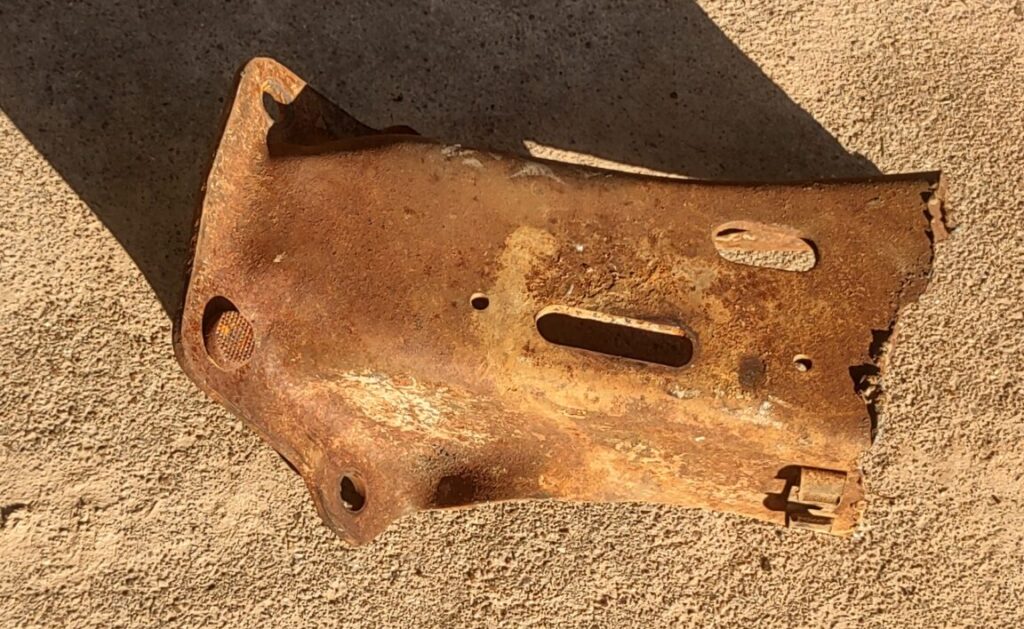
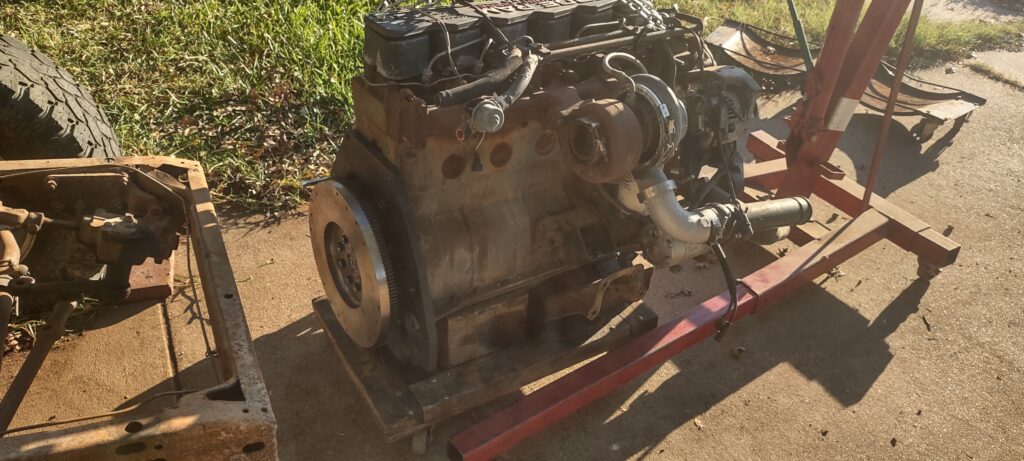
While this isn’t the first time this engine swap has been done, and many are documented, I have never seen exact measurements to know if I am close to where the engine should be. You will note I didn’t attach the transmission, that was on purpose. I’m just not comfortable with all that weight. While it would be nice to know where the transmission will sit too, I don’t think it will impact this task. The point is that with such a long engine, I want it sitting as far back as possible. I still want to be able to access things, remove valve covers, etc. but also, it needs to clear the front clip and radiator. There are several points of interference that I noted:
- The old engine mounts had a support tab welded onto the frame, it has to go
- For this process, the steering column should come out. The crossmember will slide in between it and the frame and I suppose I could fish it in but its probably easier to just remove it for now
- There is an old bump stop bracket that serves no use, cut it out
- Vacuum canister bracket on the firewall needs to go
- I really hope the track bar mount doesn’t need to come out, but maybe
- Most importantly, the bolts for the coil spring buckets go through the frame. The crossmember is hollow-horseshoe shaped, just like the leaf spring brackets on the rear. I may be lucky enough to cradle these bucket bolts within this space, or I could possibly trim the flat face of the crossmember or drill a hole to allow access to those bolts. Worst case I might have to weld the buckets onto the frame which I would really like to avoid, to keep it modular
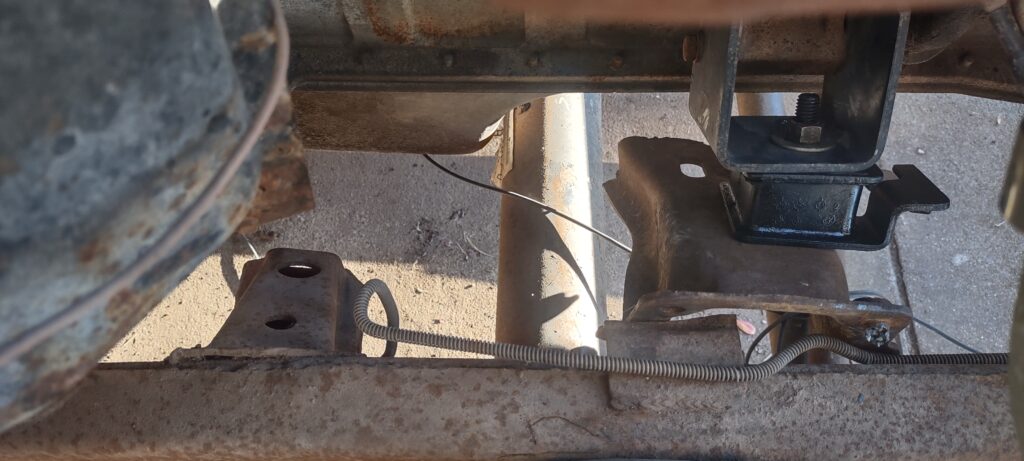


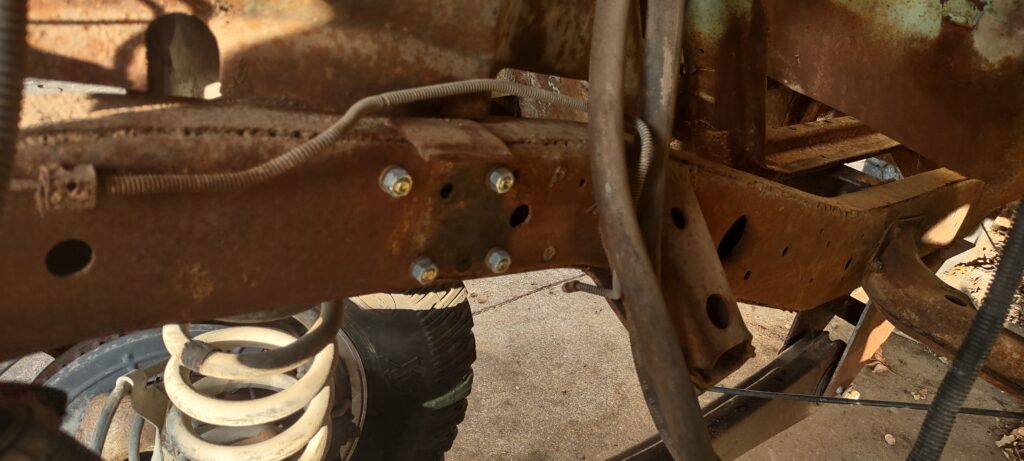

You will notice above there is a gap between the crossmember and the frame. I was perplexed by this for a few hours but I think I have had a break through. The resting place of the engine, while not final, had the passenger side gap at 0.5″ and the driver side gap at 1.5″. This seemed suspiciously specific, to basically be 1″ away from the frame on either side (if I took the time to even the motor out). I did some poking around and found that the engine mount has a locator pin which should face the crossmember side and not the engine side like I had it, although I don’t think this really matter, might as well make it right. Then I noticed both the bracket on the engine and the crossmember has slots. The crossmember two slots. I confirmed the top slot is the one the diesel engine uses (the other slot is for a gas engine I believe). I confirmed everything is stock 1993 equipment so what could account for an inch, and what can be done to push the crossmembers out at this point? I took some measurements before moving things around and noted both engine bracket and crossmember are slotted… and if you aren’t utilizing the full range of the slot that might do it.
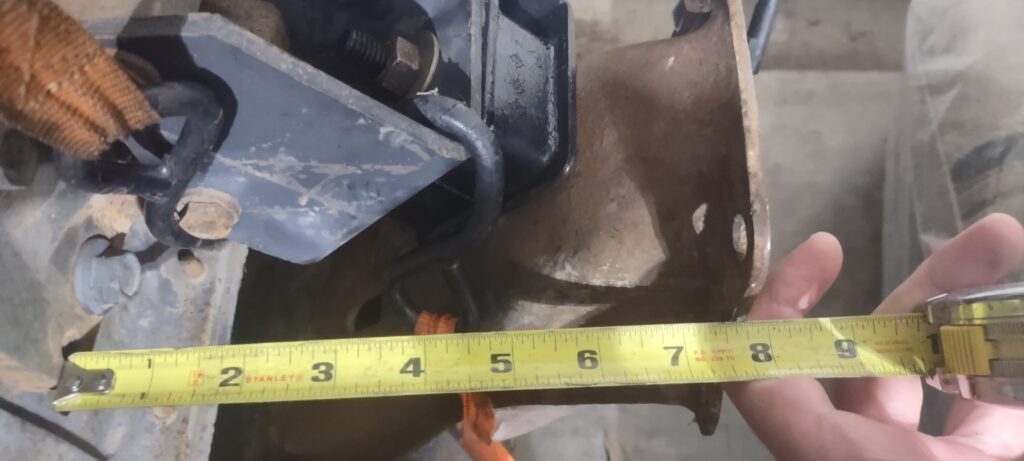
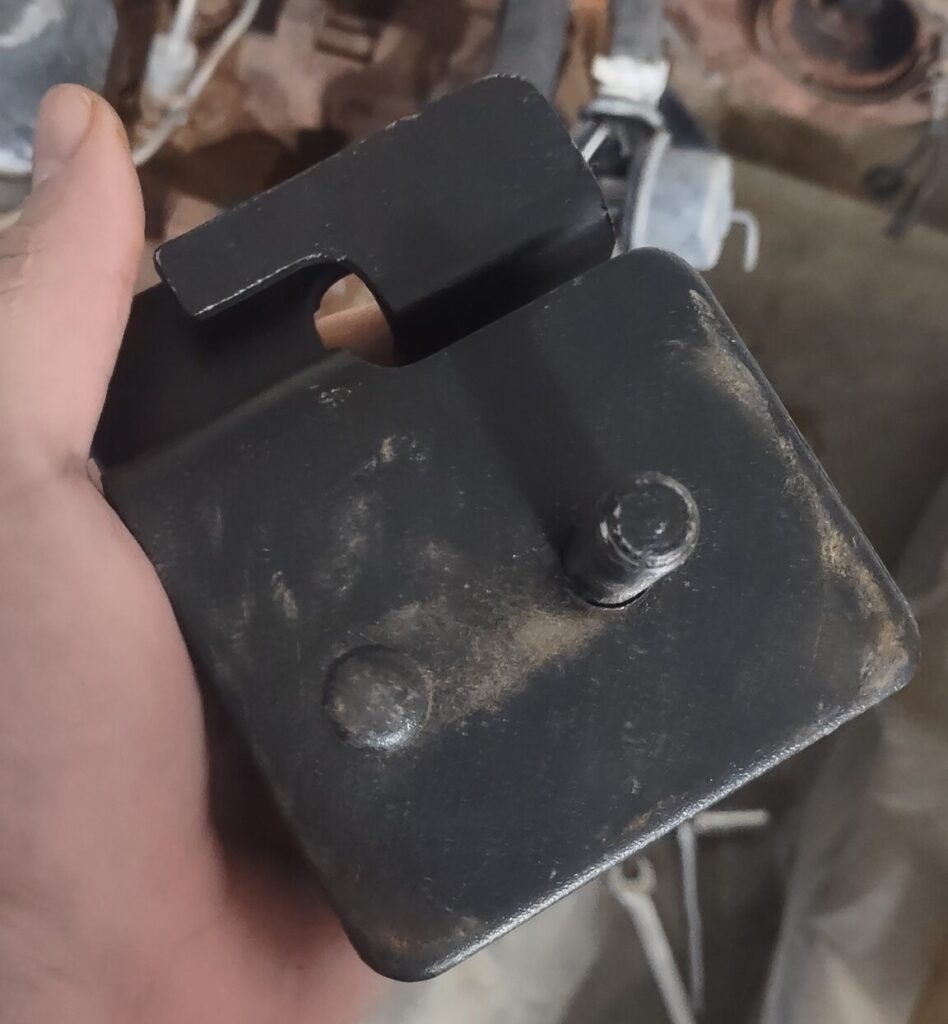
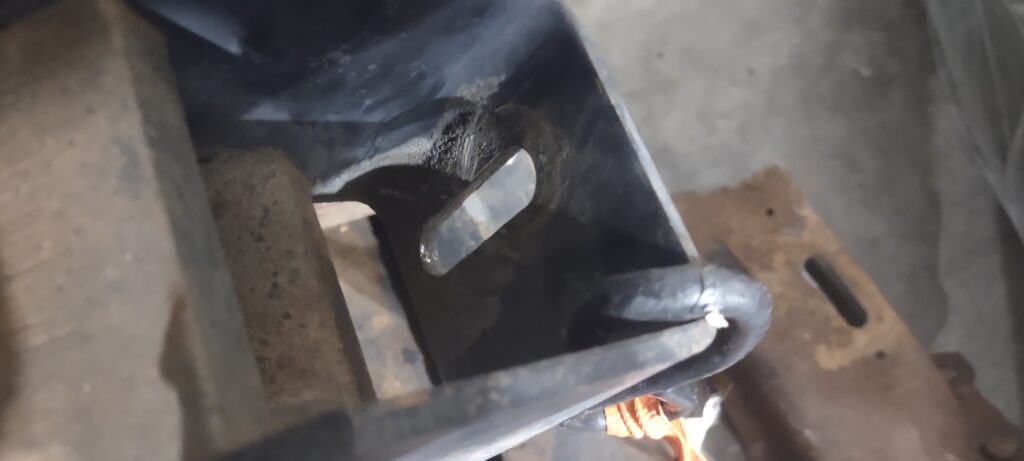
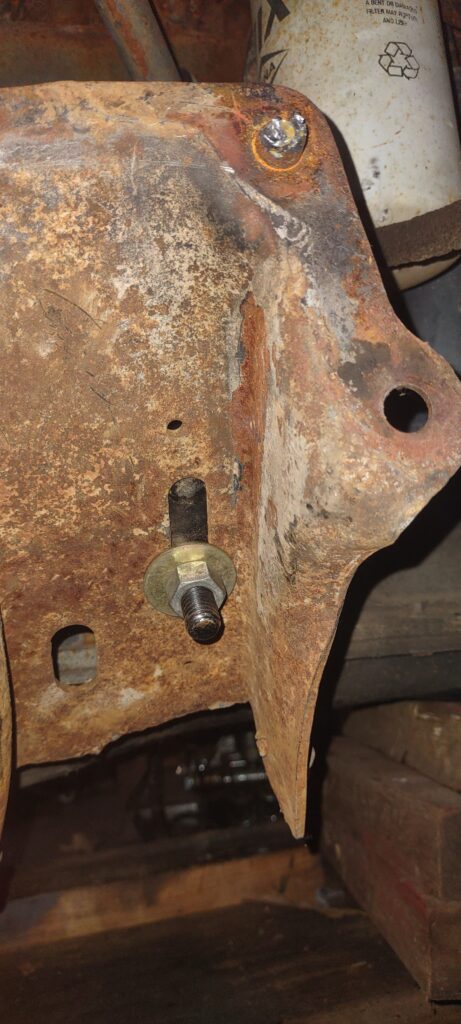

Over the coming days I am going to remove the pieces that are in the way and starting early one morning, roll everything out to do more test fitment. Hoisting the engine in and out of the truck is very simple this way, taking maybe 10 minutes max, so I can get a lot of cycles in a day if I start early to iron out the details.
